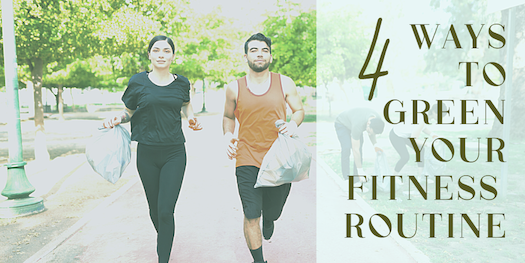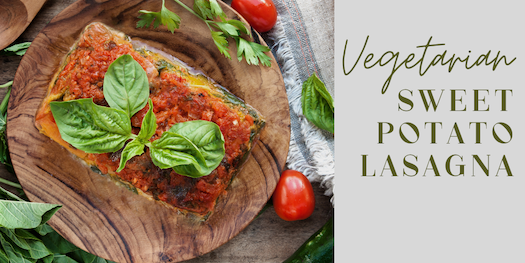For the past 50 years, the Academy of Nutrition and Dietetics has dedicated March to celebrating National Nutrition Month®. This year's theme is "Fuel for the Future," focusing on sustainable eating for a healthy body and planet.
A sustainable diet focuses on consuming nutrient-rich foods that have a low environmental and food supply impact. The bottom line is that incorporating sustainable eating practices in your life positively impacts your health and the environment's health, both now and in the future.
This month's newsletter educates and inspires you to fuel your future with sustainable eating tips.
-Stephanie
|
|
|
10 Sustainable Eating Tips
|

- Consume more plant-based proteins - Legumes/dried beans (black beans, pinto, kidney, etc.), lentils, and chickpeas are not only an excellent source of protein, but they also have a lower carbon footprint than animal products and are very affordable. Health benefits of bean consumption include decreased cancer risk, improved heart health, and better gut health.
- Join Meatless Monday Movement - To improve your health and environment, serve a plant-based meal once a week. Experiment with other meatless meals such as lentil soup, quinoa, vegetable salad, or a garden lasagna.
- Eat less meat and buy higher quality - The United Nations estimates that 14.5 percent of greenhouse emissions come from livestock production. Currently, Americans consume more meat than what is recommended by the USDA. Pay attention to where your meat comes from and aim to buy responsibly produced, higher-quality meat. Investing in your meat choices will lead to less consumption and less waste.
- Buy local – Purchasing your food from local vendors means less pollution! Local food doesn’t have to travel as far to get to your plate, helping to reduce greenhouse gas emissions and improve your carbon footprint. Supporting local businesses is also good for the local economy. A win-win for all!
- Watch for palm oil – This commonly used oil is the cause of large-scale deforestation. Rainforests, and the habitats of many animals, such as orangutans and Sumatran tigers, are being destroyed at 300 soccer fields per hour. Many environmentally-friendly companies use sustainable palm oil certified by the Rainforest Alliance. Check the ingredient lists of your processed food items, cleaning supplies, and hygiene products.
- Reduce bottled water consumption – Most freshwater humans use is for food production. In addition, the US uses 1.5 billion gallons of oil each year to produce plastic water bottles. The amount of plastic pollution in the oceans accumulating due to plastic bottle use alone is frightful. Buy reusable bottles that function well for you and your family so everyone will be excited and committed to using them!
- Grow your food. Practice gratitude for this earth you live on and your body by planting a garden and nurturing your body with its food.
- Minimize food waste - Americans throw away billions of pounds of food yearly, wasting the energy and water used to grow, transport, and package it. By being more mindful of your food, you can reduce food waste and help preserve more energy and resources.
- Embrace all the fantastic and nutritious plant-based foods available - Create the foundation with: whole-grains, fruits, vegetables, beans, peas, legumes, nuts, seeds, avocados, coconut, and plant-based oils such as olive oil, avocado oil, and grapeseed oil.
- Experiment and have fun! Consume an assortment of foods to meet your nutrient needs. A few favorites include quinoa, tofu, tempeh, hemp seeds, chia seeds, flax seeds, seaweed, and fermented vegetables to create more intriguing meals in flavor and texture!
|
|
|
4 Ways to Green Your Fitness Routine
|

- Exercise outdoors - Exercising outdoors has a mental advantage over exercising indoors. Getting some fresh air while you sweat is good for your whole mind and body while reducing the use of electricity and resources used while working out indoors. Escape the gym for a hike in the woods where the only eyes on you will be the squirrels!
- Explore nature - Find fun things to do outside with the kids! Try a scavenger hunt at the park or explore nature walks in your area. Giving children the opportunity to feel connected with the outdoors will help them grow into conscientious adults who will change the world!
- Be mindful of your mileage - And no, I'm not talking about the miles you clock during your workout but the miles you drive to your gym or workout destination. Ride your bike or walk to your destination. If walking or riding your bike is not an option, reflect on ways you can reduce the miles spent driving. Can you plan your day to reduce travel time? Do you have a neighbor you could enlist as a workout and carpool buddy?
- Go Plogging! Originating in Sweeden, plogging is a new global movement that combines running or walking with caring for the environment. The idea behind plogging is to clean up the streets and trails in your community by picking up trash as you go for a walk or jog. Plogging is a way to give back to the planet while moving your body! Next time you head out for a walk or jog, bring a recycled trash bag and some gloves to pick up trash.
|
|
Featured Recipe
Vegetarian Sweet Potato Lasagna
|

Swap traditional lasagna noodles for thinly sliced sweet potatoes for a nutrient-dense, energy-packed dish!
- 2 tablespoon avocado oil, divided
- 1 medium onion, minced
- 1 - 28 ounce can of no added salt diced tomatoes, undrained
- 3 tablespoons no added salt tomato paste
- 4 garlic cloves, minced and divided in half
- 2 teaspoons oregano
- 1 teaspoon paprika
- 1 teaspoon sea salt, divided
- 1 teaspoon black pepper, divided
- 1 cup water
- 1 cup fresh basil, finely chopped
- 2 large sweet potatoes, peeled and thinly sliced lengthwise
- 3 cups baby spinach
- 1 - 12 ounce carton of tofu, drained
- 3 tablespoons nutritional yeast
- 2 tablespoons fresh lemon juice
- 2 cups shredded mozzarella cheese or plant-based mozzarella cheese divided
Preheat oven to 350 F.
In a medium saucepan, heat one tablespoon of oil over medium heat. Add onions; cook for about 5 minutes. Add diced tomatoes, tomato paste, one tablespoon minced garlic, oregano, paprika, pepper flakes, ½ tsp salt, and ½ tsp black pepper.
Add water and bring to a boil. Reduce heat and simmer for 25 minutes. Stir in basil.
Meanwhile, add tofu, nutritional yeast, lemon juice, and the rest of the garlic, avocado oil, salt, and pepper in a food processor. Blend until smooth; fold in 1½ cups cheese and set aside.
Assemble in an 8-inch square baking dish. Start by spreading ½ cup tomato sauce on the bottom of the baking dish. Add one layer of potato slices and top with ½ cup filling, 1 cup spinach, and ½ cup sauce. Repeat with remaining ingredients. Top with cheese.
Cover with foil and bake for 55 minutes. Uncover and broil on high until cheese browns, about 2 minutes.
Serves 6
Per Serving: 352 calories, 16 grams fat, 6 grams saturated fat, 29 mg cholesterol, 550 mg sodium, 33 grams carbohydrates, 7 grams fiber, 20 grams protein
|
|
|
Be Inspired
|
|

|
|
|
About SO Nutrition
|
 Stephanie Leipprandt Ouellette, MBA, RDN, LD
Stephanie Leipprandt Ouellette, MBA, RDN, LD Stephanie has been working in the field of nutrition and dietetics since 1995. She earned a Bachelor of Science degree in Dietetics from Michigan State University, completed an Approved Pre-Professional Practice Program at Western Michigan University and earned a Master of Business Administration from Baker College. She’s been a Registered Dietitian Nutritionist since 1996 and licensed in Texas since 2007. In 2008, Stephanie earned her certification in Childhood and Adolescent Weight Management. Stephanie has extensive clinical & managerial experience, both in corporate settings and in the community. Now she wants to share her knowledge with you, because most (if not all) nutritional habits begin at home.
Stephanie and her family reside in Katy, Texas
|
|
| |
Copyright © 2023 Customized Nutrition Newsletters, All rights reserved.
|
|
| |
|
|